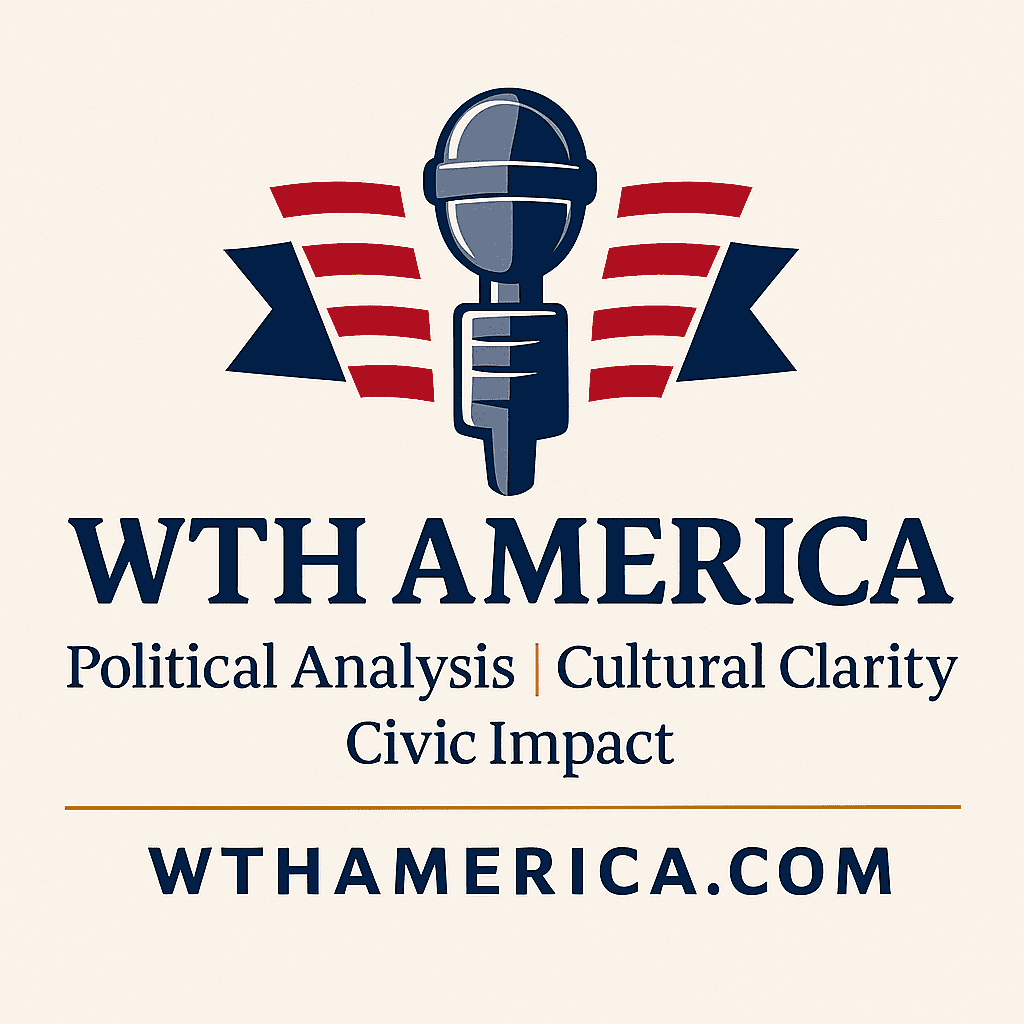
“Arrest Me, Tough Guy!” Gov Newsom Punches Back on Trump Admin’s Threats
June 9, 2025
Could The Rage after LA Defeat Trump or Embolden Him?
June 9, 2025
“You don’t think it’s gonna happen to you, quite frankly, until it does,” said Luisa, whose father was detained in a raid at the Ambiance Apparel factory in Los Angeles’s garment district. Immigration officers had arrived in force on Friday morning and invaded the warehouse, initiating what Luisa called “a manhunt for each and every one of the workers” on their list.
Luisa, twenty-four, has been unable to talk to her father, fifty-one, since he was taken from the factory floor.
A crowd immediately gathered outside Ambiance, drawn by the swarm of armored vehicles. Some protesters blocked vans in an attempt to physically prevent them from leaving the scene with detainees. Observing the action was David Huerta, president of Service Employees International Union–United Service Workers West (SEIU-USSW), who was tackled to the ground, injuring his head. Huerta was treated at a hospital but remains in federal custody.
Luisa’s family has been increasingly worried about separation since Donald Trump’s election last November. “My father made it a big deal to ensure us that if it did happen — he always said, ‘If it does happen, but it won’t’ — we’re gonna be fine,” Luisa told Jacobin. She has been given a pseudonym to protect her anonymity.
Now that the moment has arrived, the family’s optimism has given way to quiet dread. “We don’t know how to address it with each other even,” she said. “We want to remain strong for him, and for ourselves, so that we can find ways to help him.” She described the family’s interactions with officials so far as “suspicious and difficult to navigate.”
On Saturday morning, Luisa caught a glimpse of her father outside the federal building in Downtown Los Angeles. He was being loaded into a van for transport to a separate facility. Officials had promised her visitation but canceled at the last minute, citing the protests roiling outside.
By Friday night, the federal building had already become a focal point of protests against the raids. Police had fired rubber bullets, flash-bang grenades, and tear gas at protesters and journalists surrounding the building. The melee on federal property empowered Trump to intervene directly, and on Saturday, he called in the National Guard to protect the building.
California legislators had not asked for the federal government’s assistance. Instead, evidently eager to create a national spectacle, Trump went over their heads, putting the protests in the national spotlight. His border czar, Tom Homan, threatened to arrest the mayor of Los Angeles, Karen Bass, and the governor of California, Gavin Newsom, if they resisted Trump’s federal troop takeover.
Capitalizing on the media attention, Trump issued several sensationalist statements, promising that “the Illegals will be expelled” and Los Angeles would be “set free.” “A once great American City, Los Angeles, has been invaded and occupied by Illegal Aliens and Criminals,” the president wrote. He called the protests “violent, insurrectionist mobs.” He pledged to “liberate Los Angeles from the Migrant Invasion, and put an end to these Migrant riots.”
Luisa expressed concern about how swiftly Trump shifted the narrative from the detentions to the police clashes and his demonization of protesters. “The reason why we do these protests is beyond just wanting to make noise and cause chaos,” said Luisa. “It’s meaningful, and it has purpose. They want to steer away from that. They want to change that story and say that it’s because we’re violent.”
Los Angeles City Council member Hugo Soto-Martinez rejected Trump’s claim to be acting on behalf of Angelenos who are being held captive by migrants to the detriment of their city. “That is not the way the people of Los Angeles view immigrants,” Soto-Martinez told Jacobin. “People in Los Angeles understand that immigrants are part of the very fabric of the city. So for Trump to say that is completely deranged.”
Soto-Martinez, a former union organizer and the son of undocumented immigrants himself, views the Trump administration’s provocations as opportunistic and cynical. “In the last few days, we have seen an escalation of aggressive tactics by the president, provoking these conflicts and trying to intimidate people,” he said. “The public is responding to what they’re doing, not the other way around.”
Protests in Los Angeles grew in response to Trump’s announcement that he was deploying the National Guard. On Sunday, crowds were estimated in the thousands, with demonstrators representing labor unions, immigrant rights groups, students, and many unaffiliated local residents. They held signs, waved flags, chanted through bullhorns, and blocked intersections. As National Guardsmen arrived in Los Angeles, hundreds of protesters blocked a freeway, bringing traffic to a halt. They clashed with police in multiple locations.
The Trump administration provided running color commentary, dramatizing the crisis of its own making. “Insurrectionists carrying foreign flags are attacking immigration enforcement officers,” wrote Vice President J. D. Vance on social media. White House deputy chief of staff Stephen Miller characterized events in Los Angeles as “a fight to save civilization.” Secretary of Defense Pete Hegseth threatened to send in the Marines to quell “violent mobs.” The administration placed a man who had thrown rocks at immigration vehicles on the FBI’s Most Wanted list alongside violent murderers and large-scale international drug traffickers.
On Sunday evening, Trump took to his social media platform, Truth Social, to call protesters “thugs” and demand the arrest of any protester wearing a face mask. He also called to deploy more federal forces, though it was unclear if he meant the National Guard or another body. “Looking really bad in L.A.,” he wrote. “BRING IN THE TROOPS!!!”
Gloria Gallardo, a Los Angeles public-school teacher who taught the son of a detainee, accused the Trump administration of “inciting people to build a narrative that the people here deserve to be deported.” By using inflammatory rhetoric and taking increasingly provocative action, like rolling tanks through the city streets, Gallardo said the administration is deliberately attempting to create scenarios that will go viral on social media. “They’re doing it on purpose because they want this to be circulating around the world,” she said.
Gallardo speculated that a small minority of protesters may be intent on giving Trump what he wants, whether undercover agitators or just frustrated individuals. “With any mass mobilization like this, there are people who are trying to make it more violent, and it’s not the seasoned organizers in our city,” Gallardo said. Many community activists, she said, were “at home like me trying to organize responses for our schools, or on the streets trying to be peaceful and not put people in danger.”
Luisa, the detainee’s daughter, told Jacobin that the Trump administration is “definitely enticing people to react in certain ways,” noting that “protests come with powerful emotions” and accusing the administration of “poking the bear.” She cautioned protesters not to play into their hands. “It’s important to have protests, but we need to do so in a way that does not prove the current administration right.”
The Trump administration purports to be responding to out-of-control events in Los Angeles. Many commentators challenge this order of events, arguing instead that he targeted the city and intentionally turned it into a political spectacle. He could have known, they argue, that high-profile, military-style workplace raids in a majority-Latino and largely immigrant city would be met with protests, that deploying two thousand National Guardsmen to quell those protests would draw even more ire, and that large unplanned protests frequently involve clashes that make for sensational media fodder, no matter how peaceful the vast majority of participants are.
Gloria Gallardo believes that the Trump administration chose this showdown to divert attention from his administration’s failure so far to relieve Americans’ economic distress. “He wants to distract from all the other problems that are happening — with the tariffs, with the high cost of living. People who rely on Medicaid and food stamps are finding that things are getting even more difficult. It’s so expensive when I go to the grocery store. I can’t move for economic reasons. Things are really rough,” Gallardo said.
Trump’s so-called Big Beautiful Bill has come under fire for drastic cuts to Medicaid coupled with a massive tax break for the richest Americans. “The budget is set to increase the wealth of the top 10 percent of Americans by 2 percent,” wrote Liza Featherstone in this magazine. Meanwhile, “the resources of the bottom 10 percent are expected to shrink by 4 percent, because of the cuts to health care and food assistance.”
Councilmember Soto-Martinez accused Trump of trying to blame Americans’ economic difficulties on immigrants to deflect from his own failed leadership. “The federal minimum wage is $7.25 per hour, and rents are only rising. People feel that frustration. To say that somehow immigrants are responsible for this is an absolute distraction,” Soto-Martinez said. “Meanwhile, the billionaire class continues to become richer. It’s the billionaire class that’s robbing us blind, and they’re not even doing anything illegal.”
Marissa Nuncio is the executive director of the Garment Worker Center, an organizing space for Los Angeles garment workers whose membership consists primarily of immigrants from Mexico and Central America. Nuncio said that this kind of scapegoating of immigrant workers is a tactic commonly used to distract from economic inequality. Accusing immigrants of driving down wages for native-born Americans obscures the real problem, Nuncio told Jacobin: a broader climate of exploitation.
“It is exploitative industries, exploitative bosses, and draconian immigration policies that place immigrants in vulnerable positions that create these ripple effects in these economies,” she said.
Nuncio described garment workers in Los Angeles as “skilled craftspeople creating garments from whole cloth. It’s amazing to see their work.” Undocumented immigrants are paid poorly not because what they do is easy, but because they are uniquely vulnerable to workplace abuses. Nuncio said that Trump hopes his raids will have a chilling effect on immigration, but instead they will have a chilling effect on workplace organizing, depressing wages further.
“Over twenty years of organizing workers,” she said, “we know that what we will see in the workplace is exploitative bosses saying, ‘Hey, if you complain about those wages, I know where you live, and I’ll call immigration.’”
While Trump’s xenophobia is particularly brazen, Gallardo sees a problem much bigger than Trump at play. “Republicans — or, really, the ruling class, the elites — don’t want Trump’s base to understand the material reasons for the way things are,” she said. “They want to stop their base from actually coordinating as a working class with these other groups of people.”
Undocumented immigrants and their families are bearing the immediate brunt, she said. But the division ultimately hurts the entire working class, including many people who are at home rooting for Trump to crush the violent mobs of illegal immigrants and crazy leftists.
The events in Los Angeles have played out in a familiar sequence: manufacture a crisis, amplify the conflict, then use the ensuing chaos to justify increasingly authoritarian measures while diverting attention from policies that hurt ordinary Americans. As Luisa waits for word about her father and protesters face off with National Guardsmen, the Trump administration is hoping that questions about who benefits from this cruelty and repression go unasked.
Great Job Meagan Day & the Team @ Jacobin Source link for sharing this story.







